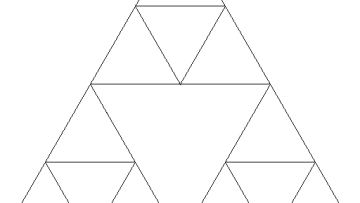16:00
16:00
Dehn's problems and Houghton's groups
Abstract
Deciding whether or not two elements of a group are conjugate might seem like a trivial problem. However, there exist finitely presented groups where this problem is undecidable: there is no algorithm to output yes or no for any two elements chosen. In this talk Houghton groups (a family of groups all having solvable conjugacy problem) will be introduced as will the idea of twisted conjugacy: a generalisation of the conjugacy problem where an automorphism is also given. This will be our main tool in answering whether finite extensions and finite index subgroups of any Houghton group have solvable conjugacy problem.
There is only one gap in the isoperimetric spectrum
Abstract
We saw earlier that a subquadratic isoperimetric inequality implies a linear one. I will give examples of groups, due to Brady and Bridson, which prove that this is the only gap in the isoperimetric spectrum.
16:00
The Story of Equations
Abstract
We are pleased to announce that Andrew Wiles will present the inaugural Oxford Mathematics Christmas Public Lecture. Please register by emailing @email
11:00
Convergence properties in Stone spaces
Abstract
In this talk, I will introduce an internal, structural
characterisation of certain convergence properties (Fréchet-Urysohn, or
more generally, radiality) and apply this structure to understand when
Stone spaces have these properties. This work can be generalised to
certain Zariski topologies and perhaps to larger classes of spaces
obtained from other structures.
In two radio programmes next week Oxford Mathematics' Whitehead Lecturer Vicky Neale will discuss beauty. In the first Vicky, together with historian of science Simon Schaffer and philosophers Barry Smith and Angie Hobbs, examine the mathematics and morality of beauty together with its evolutionary origins and benefits.
On sparse representations for piecewise smooth signals
Abstract
It is well known that piecewise smooth signals are approximately sparse in a wavelet basis. However, other sparse representations are possible, such as the discrete gradient basis. It turns out that signals drawn from a random piecewise constant model have sparser representations in the discrete gradient basis than in Haar wavelets (with high probability). I will talk about this result and its implications, and also show some numerical experiments in which the use of the gradient basis improves compressive signal reconstruction.


